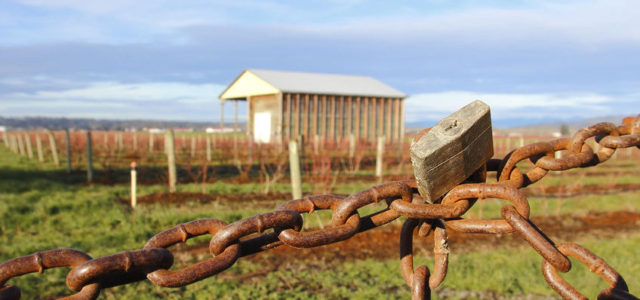Imagine two neighbors, Steve and Paul, live next to each other in rural Colorado. Each landowner owns a large piece of land, where some areas have fences and other areas do not. Their land borders each other’s for a number of miles. Steve decides that he wants to build a small structure where he can store some wheat for a short period. Believing that he has the right to build on what is his land, he erects the structure with no objections from Paul. A number of years later, Paul conducts a survey on his property and discovers that Steve’s structure is actually on Paul’s property. A dismayed Paul runs to Steve’s house to confront him about the structure. At Steve’s house, Paul produces the survey that demonstrates how Steve took Paul’s property. Paul insists that Steve remove the structure, re-sod the property, and pay rent for years of using Paul’s property. Must Steve pay Paul according to his demands?
Adverse Possession
When a person occupies a property to which he or she does not hold legal title, provided the person believes that he or she has a right to the property, that person can become the legal title owner if the person occupies the property for a statutorily prescribed period. This is known as adverse possession. In Colorado, adverse possession, wherein the person occupying the land becomes the legal owner, is effective after 18 years.
Rooted in Usacapio Roman law, the person who possessed land for a significant amount of time was recognized as the owner of that property. The Usuacapio was adopted in England when lords used to battle each other for territory. Eventually, this was codified under English common law as adverse possession. Later, when English common law was adopted as American law, adverse possession became part of American law. Colorado adopted adverse possession.
Elements of Adverse Possession
To claim title pursuant to adverse possession, a claimant must demonstrate the following elements:
- Continuous: the adverse possession must be uninterrupted, meaning that the owner cannot take control of the property during the statutory period; note, though, that successive possessors can pool their respective years to create a sum of 18 years; this is known as “tacking,” where the years are tacked to each other;
- Hostile to the interests of the owner: this means without permission, not that the possessor is declaring war on the owner of record;
- Adverse: contrary to the owner’s interests;
- Claim of right: the possessor believes he has the right to be possess the property;
- Actual: this is effective control over the property, which Colorado courts have found that erecting a fence can be sufficient;
- Exclusive: only the possessor has control of the property; if the owner of record has shared control with the possessor then that will defeat the possessor claim of adverse possession.
In the above scenario, Steve would likely become the owner of the property through adverse possession because he can satisfy all the elements.
For questions about adverse possession or other real estate legal needs in Colorado, contact the Law Offices of Eric L. Nesbitt, P.C. at 303-741-2354 or Info@NesbittLawOffices.com.

